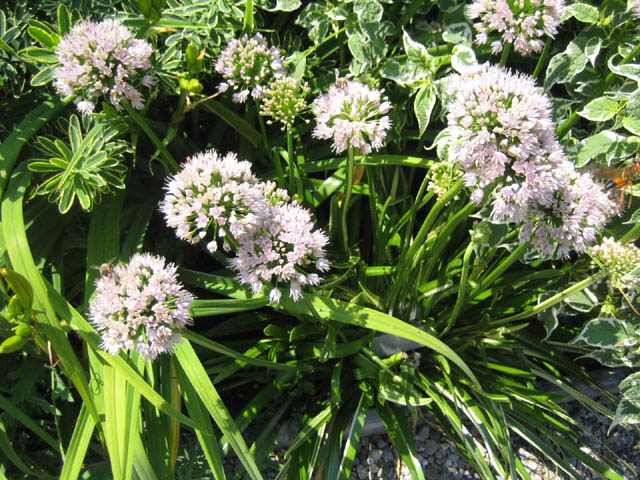What’s the buzz?
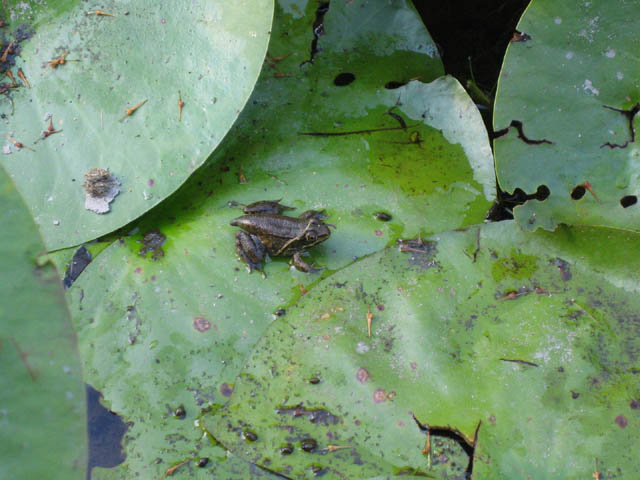 I was crouching on the pond bank at 8:00 this morning trying to get a frog shot (cute little guy, isn’t he? A pre-teen, I would guess, in that awkward phase between polliwog and voting age) when I became aware of a hum over my head. The Button bush (Cephalanthus occidentalis) was already full of bees!
I was crouching on the pond bank at 8:00 this morning trying to get a frog shot (cute little guy, isn’t he? A pre-teen, I would guess, in that awkward phase between polliwog and voting age) when I became aware of a hum over my head. The Button bush (Cephalanthus occidentalis) was already full of bees!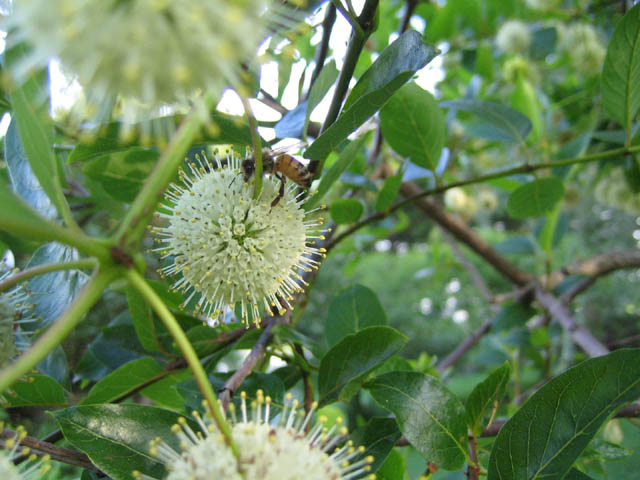
Bees have been in the news a lot lately because of Colony Collapse Disorder and everyone has a different theory for the cause. Beekeepers in a couple dozen states and a few other countries have reported huge losses in their bee populations. Bees are susceptible to various mites and occasionally go through periods of die-off but the weird thing about the current problem is that bees have been disappearing. (Normally during a die-off, bees are found dead around the hive). Some say it’s caused by cell phones, some say pesticides, some say mites and so far no one has definitively hit the nail on the head.
 I don’t know much about bees aside from what I’ve read in Robbing the Bees by Holley Bishop and what I’ve found online (click here for a to-the-point article). But I have been paying attention to one very active wild hive near the greenhouse and to me (and I freely admit to knowing absolutely nothing) – the bees look healthy! The only thing I’ve wondered about is why we haven’t seen them swarm. Normally when the hive gets too big for its britches, a new queen is crowned and the hive splits and they relocate to another castle. So far these bees are staying put.
I don’t know much about bees aside from what I’ve read in Robbing the Bees by Holley Bishop and what I’ve found online (click here for a to-the-point article). But I have been paying attention to one very active wild hive near the greenhouse and to me (and I freely admit to knowing absolutely nothing) – the bees look healthy! The only thing I’ve wondered about is why we haven’t seen them swarm. Normally when the hive gets too big for its britches, a new queen is crowned and the hive splits and they relocate to another castle. So far these bees are staying put.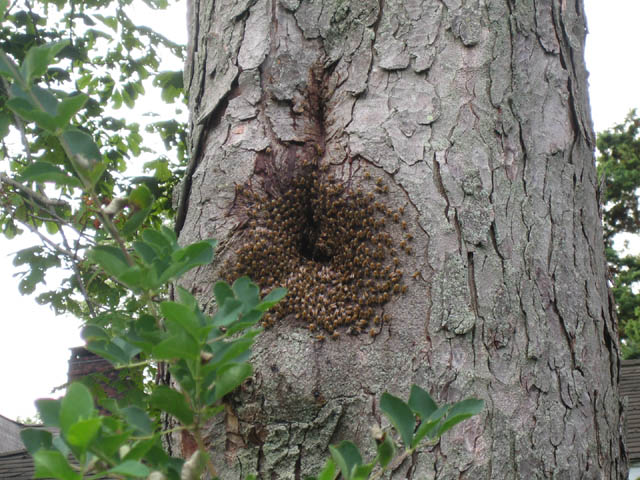
One of the good things that has come out with the doom ‘n’ gloom news is that people are learning to be solicitious of bees and a lot of our visitors, rather than looking frightened when they hear a plant humming and see all the bee activity, look really reverent instead. There’s also been more press about planting for the bees and creating healthy habitats for them which involves a non-manicured approach to gardening.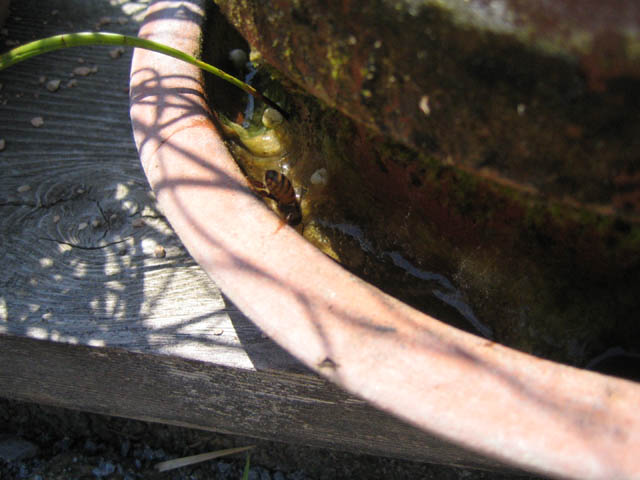 The recommendations are to plant a riot of flowers, avoid using heavy mulch, just say No to pesticides (avoid non-organic chemistry altogether), and let your garden “go” a bit. I’ve noticed too in terms of habitat, they also appreciate having a place to drink. We leave a little water in pot saucers for them but they also dip into the pond on a dry day. If you build a bee garden, they will come! And with a wild bee friendly garden, you’re likely to get other wildlife too – like hummingbirds and dragonflies… (and wasps… Sometimes, you’ve got to take the good with bad. And carry a sting kit.) Check out this video about planting a bee garden (it’s in Berkeley, CA – but full of good advice and info no matter where you garden).
The recommendations are to plant a riot of flowers, avoid using heavy mulch, just say No to pesticides (avoid non-organic chemistry altogether), and let your garden “go” a bit. I’ve noticed too in terms of habitat, they also appreciate having a place to drink. We leave a little water in pot saucers for them but they also dip into the pond on a dry day. If you build a bee garden, they will come! And with a wild bee friendly garden, you’re likely to get other wildlife too – like hummingbirds and dragonflies… (and wasps… Sometimes, you’ve got to take the good with bad. And carry a sting kit.) Check out this video about planting a bee garden (it’s in Berkeley, CA – but full of good advice and info no matter where you garden).